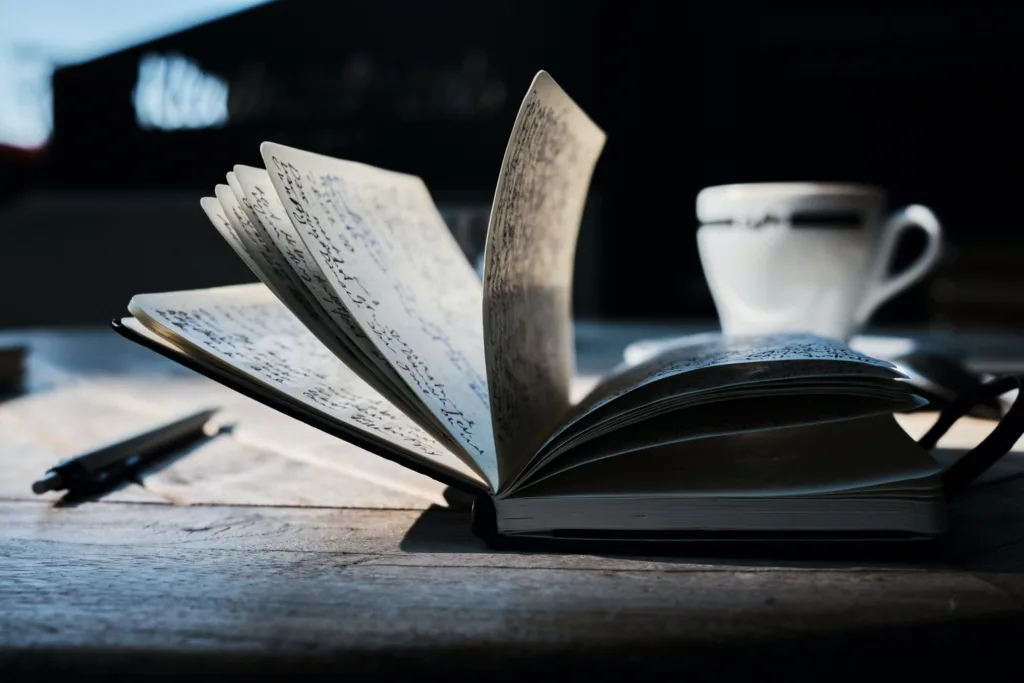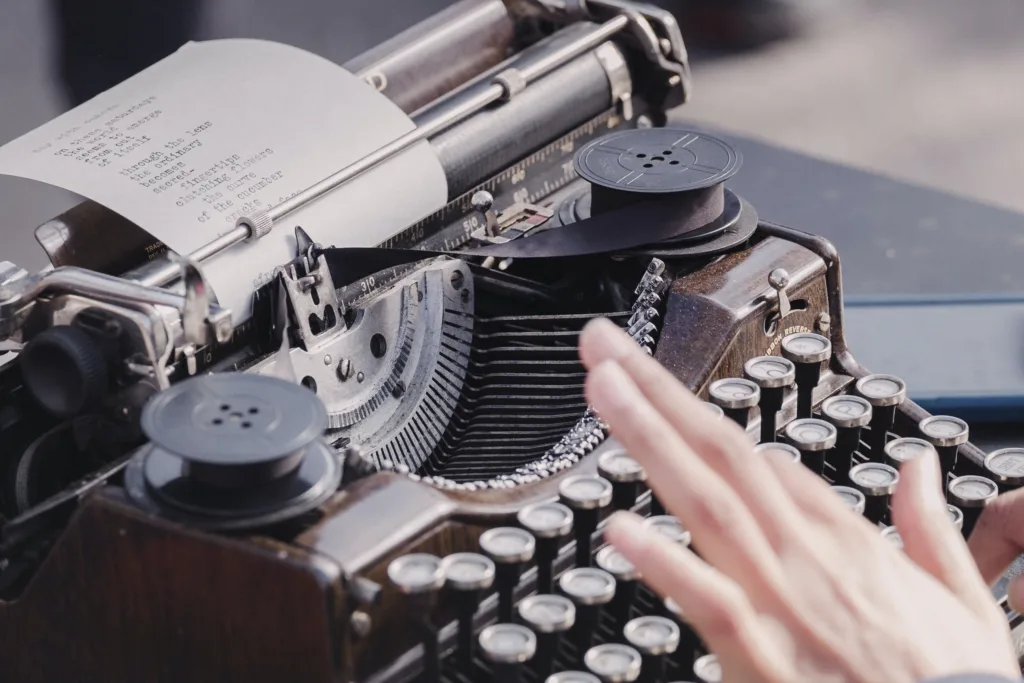End rhymes are a fundamental aspect of poetry and song lyrics, adding a musical quality to the written word. They occur when the final words of two or more lines rhyme with each other. This type of rhyme, also known as “tail rhyme” or “terminal rhyme,” is commonly used in English poetry and is often found in song lyrics as well.
One of the main reasons poets employ end rhymes is to create a pleasing rhythm in their poetry. By having the last syllables of each line rhyme, a sense of harmony is established. This rhythmic quality can enhance the overall experience of reading or listening to a poem, making it more enjoyable and captivating.
End rhyme can be seen as a form of closure within a poem. When a line ends with a rhyming word, it gives a sense of completion to that particular line. It allows the reader or listener to pause and reflect on the words just spoken before moving on to the next line. This pause can help to emphasize certain ideas or emotions expressed within the poem, adding depth and meaning to the overall message.
Furthermore, end rhymes can contribute to the overall structure and organization of a poem. Many poets use regular rhythm and rhyme schemes, and end-stopped lines (lines that end with punctuation) with end rhymes are often employed to achieve this. The use of end-stops helps to create a sense of order and control, allowing the reader to follow the poet’s intended flow and structure.
Let’s take a look at an example to further understand end rhyme:
“The sun sets low, casting a warm glow,
As the river flows, gently below.
The birds sing sweetly, in harmonious delight,
As day turns to night, in the fading light.”
In this example, the words “glow” and “below” as well as “delight” and “light” rhyme with each other. These end rhymes contribute to the musicality of the poem and help establish a rhythm. Additionally, the use of end-stopped lines and the regularity of the rhyme scheme create a sense of order and structure.
End rhymes play a significant role in the world of poetry and song lyrics. They not only add a pleasing musical quality to the written word but also contribute to the overall rhythm, structure, and organization of a poem. By utilizing end rhymes, poets can enhance the impact of their work and create a more engaging and memorable experience for their audience.
What Is End Rhyme And Examples?
End rhyme is a poetic technique characterized by the occurrence of rhyming words at the end of lines in a poem. It adds a musical quality to the verse and helps create a sense of rhythm. This type of rhyme is commonly used in various forms of poetry and can contribute to the overall aesthetic appeal of the piece. Let’s explore a few examples to illustrate this concept:
1. In William Shakespeare’s famous play “Romeo and Juliet,” Juliet says, “Good night, good night! Parting is such sweet sorrow / That I shall say good night till it be morrow.” Here, the end rhyme occurs between “sorrow” and “morrow.”
2. Another example can be found in Robert Frost’s renowned poem “Stopping by Woods on a Snowy Evening”: “The woods are lovely, dark and deep, / But I have promises to keep, / And miles to go before I sleep.” The end rhyme is evident in the words “deep” and “sleep.”
3. Consider the following lines from Edgar Allan Poe’s poem “The Raven”: “Once upon a midnight dreary, while I pondered, weak and weary, / Over many a quaint and curious volume of forgotten lore.” Here, the end rhyme is present in “dreary” and “weary,” emphasizing the dark and weary mood of the poem.
4. Dorothy Parker’s poem “Interview” also employs end rhyme: “The ladies men admire, I’ve heard, / Would shudder at a wicked word.” The words “heard” and “word” form an end rhyme, contributing to the poem’s rhythm.
End rhyme serves as a fundamental aspect of poetic composition, providing structure and enhancing the musicality of the verse. It creates a sense of cohesion and can be used to convey various emotions and themes within a poem.

What Are End Rhymes Called?
End rhymes are called by several names, including “tail rhyme” or “terminal rhyme.” This type of rhyme occurs when the last words of two or more lines in a poem share the same sound. The use of end rhyme adds a musical quality to poetry, creating a pleasing and rhythmic effect. It is a common technique used by poets to enhance the overall structure and aesthetic appeal of their work. The repetition of similar sounds at the end of lines can help to create a sense of unity and coherence in a poem. This type of rhyme is often used to create a memorable and melodic quality, making the poem more enjoyable to read or listen to. In addition to its musical benefits, end rhyme can also serve as a mnemonic device, aiding in the memorization and recollection of the poem’s content. end rhyme is an important and widely used technique in poetry, contributing to the overall beauty and impact of the poet’s work.
Where Is The End Rhyme?
In English poetry, end rhyme refers to the rhyming of the final syllables of two or more lines. It is a commonly used technique to create a rhythmic pattern and add musicality to a poem or song. End rhyme can be found at the end of each line, where the last sounds of the words match each other.
For example, consider the following lines from a poem:
“The moon is high, shining bright in the sky,
As stars twinkle, their light catches my eye.”
In these lines, the words “sky” and “eye” rhyme with each other, creating an end rhyme. This repetition of the final sound adds a sense of harmony and structure to the poem.
End rhyme is not limited to just two lines; it can occur between multiple lines in a stanza or throughout an entire poem. It helps to establish a consistent rhythm and flow, making the poem more pleasing to the ear.
In song lyrics, end rhyme is commonly used to create catchy and memorable melodies. It allows the songwriter to structure the lyrics in a way that is easy to sing and remember. For example, in the chorus of a popular song:
“I’m feeling so high, reaching for the sky,
With you by my side, I can’t help but fly.”
Here, the words “high,” “sky,” and “fly” all rhyme with each other, providing a pleasing end rhyme that adds to the song’s appeal.
End rhyme is the matching of the final syllables in lines of poetry or song lyrics. It is a widely used technique to create rhythm, musicality, and structure in English verse.
Why Do Poets Use End Rhymes?
Poets use end rhymes for several reasons. Firstly, end rhymes help create a sense of rhythm and musicality in a poem. By placing rhyming words at the end of lines, poets establish a pattern of sound that can be pleasing to the ear and enhance the overall flow of the poem.
Additionally, end rhymes provide a clear and structured form to a poem. They help establish a regularity and predictability that can be comforting to readers. This regularity can also aid in the memorization and recitation of a poem.
Furthermore, end rhymes can serve as a unifying element in a poem, tying different lines or stanzas together. When words at the end of lines rhyme, it creates a sense of connection and cohesion, allowing the poet to weave a cohesive narrative or explore a particular theme or idea.
End rhymes can also help emphasize certain words or ideas within a poem. When a poet strategically places a rhyming word at the end of a line, it draws attention to that word and can give it added significance or impact. This technique is often used to highlight key moments or emotions in a poem.
Lastly, end rhymes can add a level of beauty and elegance to a poem. The musical quality of rhyming words can enhance the aesthetic appeal of the poem, making it more enjoyable to read and listen to.
Poets use end rhymes to create rhythm, structure, unity, emphasis, and beauty in their poems. The use of end rhymes adds depth and complexity to the poetic form, making it a powerful tool in the poet’s arsenal.

Conclusion
End rhymes are a fundamental aspect of poetry that adds musicality and rhythm to a poem. This type of rhyme occurs when the last words of two or more lines rhyme with each other. It is also commonly referred to as “tail rhyme” or “terminal rhyme.” The use of end rhyme in poetry creates a pleasing and harmonious effect, making the poem more enjoyable to read or listen to.
End rhyme is widely used in English poetry and can also be found in song lyrics. It is often employed by poets to create a structured and organized form of expression. By using end rhyme, poets can establish a regular pattern and flow within their verses, enhancing the overall aesthetic appeal of the poem.
Furthermore, end rhymes can be categorized as either perfect or imperfect. Perfect end rhymes occur when the final syllables of two words have the same sound, such as “heard” and “word” in Dorothy Parker’s poem “Interview.” On the other hand, imperfect end rhymes, also known as slant rhymes or near rhymes, involve words that have similar but not identical sounds, such as “heard” and “word” in this example.
End rhymes play a crucial role in poetry, helping to create a sense of harmony, rhythm, and structure. They contribute to the overall aesthetic appeal of a poem and enhance the reader’s experience by adding a musical quality. Whether used in highly structured poems or more informal verses, end rhymes are an essential tool for poets to convey their emotions and ideas effectively.
